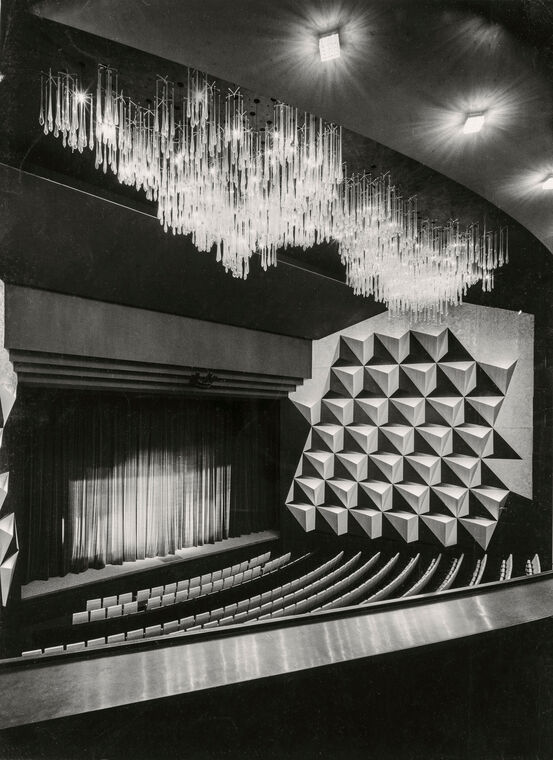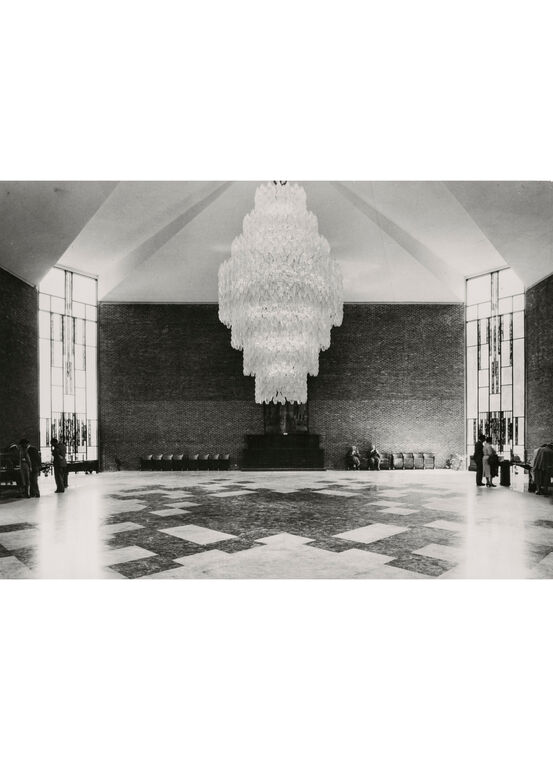On October 2, 1921, with the world still knee-deep in the rubble of World War I, the Milanese lawyer Paolo Venini teamed up with the Venetian antiquary Giacomo Cappellin to found a glasswork company. They called it Vetri Soffiati Muranesi Cappellin Venini & C., and they enlisted the Venetian artist Vittorio Zecchin to be their creative director.
Together, the trio decided on a simple ethic. They would use the world’s best glass, from Murano, to create objects that were in line with Futurism, the avant-garde movement that took the country by storm in 1909. Within months, Zecchin unveiled the Veronese vase: an elegant object with an elongated amphora shape. It was unusual, and it sold well.
Though vases and other glasswork remained a part of the company’s identity, quite soon Zecchin started playing with light—specifically, with chandeliers. At first, he executed them in a traditional style, substituting ceramics for monochrome glass. But as the firm opened stores in Venice and Paris, he tried newer, more exuberant forms. In 1925, his large chandelier in smoked glass, featuring magnificent green arms with bell-shaped cups, won the Grand Prix at Paris’s prestigious Exhibition Universelle.
Over the decades, creative direction passed from Zecchin’s hands to those of more venerable artists such as (in chronological order) Napoleone Martinuzzi, Carlo Scarpa, Fulvio Bianconi, Tobia Scarpa, and Ludovico Diaz de Santillana. In August 1951, the firm was commissioned to design Palazzo Grassi’s Velarium, positioned over the inner courtyard. Steel cables linked together glass baubles of various sizes, creating four translucent ceiling swags, to magnificent effect. Two years after Venini’s death, Scarpa’s installation for the 1961 Turin Expo—a polyhedron free fall “chandelier” that dripped from the ceiling like diamonds—propelled Italy’s glass-making to global recognition.
In Venini Light, 1921–1985, published in conjunction with an exhibition at the Fondazione Cini this year, 300 pages chronicle the brilliant rise and influence of the company’s lightwork, from the year of its founding until it was sold out of Venini-family hands, in 1985. —Elena Clavarino

Venini Light, 1921–1985 is out now from Skira
Elena Clavarino is the Senior Editor at AIR MAIL











